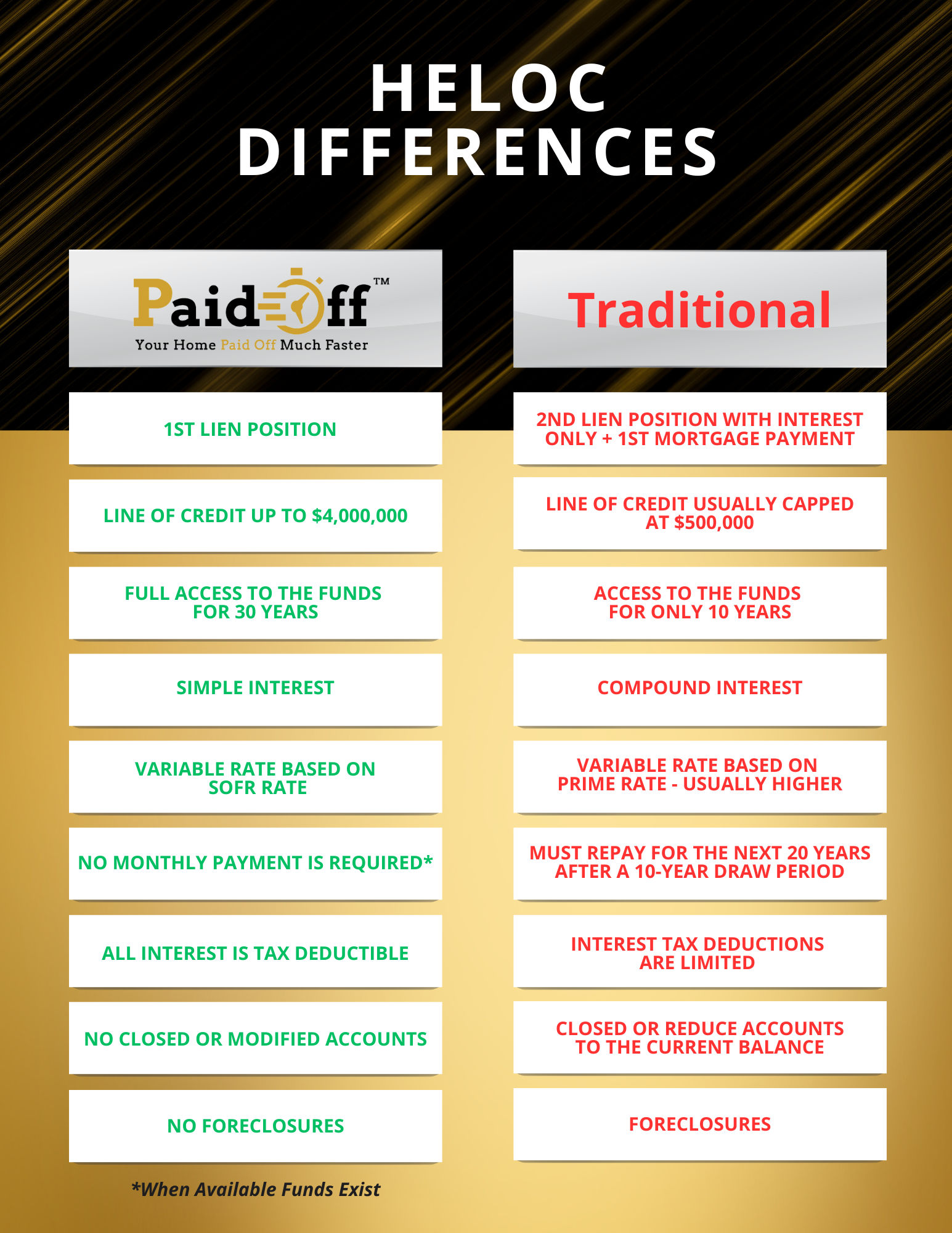Paidoff™ vs Traditional HELOC
Understanding Paidoff™ vs Traditional HELOC.
Watch Chris’s video explanation and learn about the key differences between these two options.

Watch Chris’s video explanation and learn about the key differences between these two options.
| Feature | Paidoff™ | Traditional HELOC |
|---|---|---|
| Lien Position | 1st Lien – Maximum financial security | 2nd Lien – Higher risk |
| Line of Credit | Up to $4,000,000 – Superior borrowing power | Usually capped at $500,000 – Limited flexibility |
| Interest Rate Structure | Variable Rate based on 1-Year Constant Maturity (typically lower) | Variable Rate based on Prime Rate (often higher) |
| Interest Type | Simple Interest – No compounding, no interest on interest | Compound Interest – Interest accrues on previous interest charges |
| Access to Funds | Full access for 30 years | Full access only for 10 years |
| Account Modifications | No closed or reduced accounts – Maintain full control | Accounts may be closed or reduced to current balance |
| Tax Benefits | Principal and interest are tax-deductible | Tax deductions are limited |
| Monthly Payment Requirement | Not required when funds are available – Ultimate flexibility | Mandatory repayment for 20 years after 10-year draw period |
| Foreclosure Risk | Not a single foreclosure since inception – Proven security | Millions of foreclosures – Greater financial vulnerability |
Paidoff™ eliminates the inefficiencies of traditional HELOCs, giving homeowners the power to leverage their wealth, minimize costs, and maintain full financial control. Why settle for restrictive lending when Paidoff™ gives you true flexibility and security.


